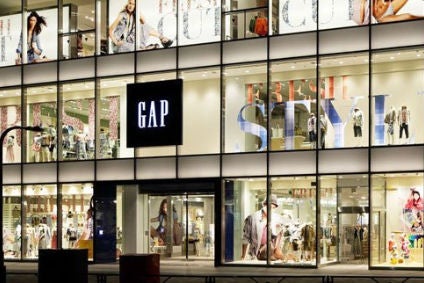
Gap Inc has reported its financial results for the fourth quarter and fiscal year ended 29 January.
- Q4 net sales of $4.53bn were up 2% from $4.42bn in the prior-year period. Comparable sales were up 3% year-over-year.
- Net loss amounted to $16m, compared to net income of $234m a year earlier.
- FY net sales of $16.67bn increased 21% year-over-year from $16.38bn last time. Comparable sales were up 6% year-over-year.
- Net income amounted to $256m, compared to a net loss of $665m in the prior year.
- Gap inc expects fiscal year 2022 revenue growth to be in the low single-digit range versus fiscal year 2021 with first quarter net sales expected to be down mid to high-single digits versus the first quarter of 2021.
“After two years of restructuring, including divesting smaller non-strategic brands, transitioning our European market to an asset-light partnership model and shedding underperforming North American stores, our core business is strong and we are poised for balanced growth across our four billion-dollar lifestyle brands,” said Syngal. “As our teams address near-term disruption from the acute headwinds that muted our fourth-quarter performance, we are confident in our ability to execute against our long-term strategy, capitalising on our investments in demand generation, customer loyalty, and artificial intelligence to accelerate profitable growth.”
Commenting on the numbers, managing director at GlobalData Neil Saunders says overall, Gap had a muted final quarter with very modest sales growth of 2.3% coming off the back of a 5.3% decline in the prior-year – leaving it down 3% on a two-year stack.
“To be fair, much of this erosion has come from store closures and the withdrawal from certain markets. The comparable sales results, which strip out the impact of shop and country exits, were up by 3% over the prior year and by 3% over 2019. This is a better performance, but not one that is market-beating,” Saunders notes.
“At brand level, the numbers are very mixed. However, the most worrisome performance comes from Old Navy where US sales declined by 4.2% over last year and are up by only 2% compared to 2019. Much of the reason for this came from supply chain problems, which delayed the delivery of some inventory. Although Gap can’t be blamed for wider industry issues, we would note that this is now the second quarter Old Navy has been blown off track by supply constraints. And, despite Gap making a big song and dance about air freighting – which cost it 600 basis point of margin over 2019 – this does not seem to be helping the most important brand in Gap’s stable. Given the impact Old Navy usually has on growth, we believe Gap needs to resolve the issues as a matter of priority if it is to successfully deliver across the new fiscal year.
“The Gap brand performed much better with an 8.1% increase in US sales; although this is down by 9.9% on 2019 partly thanks to store closures in the US. While there have been some improvements to quality and a more disciplined approach to ranging, the proposition is still far from being on the front foot. In our view, Gap is slowly evolving rather than seizing the opportunities that more radical change would present. One of the reasons for this is that Gap has decided its best chance for growth will come through partnerships and distribution deals with others rather than through its own reinvention. And, to be fair, it has made progress on this front with Next in the UK, Walmart for home in the US, and Yeezy for more upscale and cutting-edge apparel.
“The problem with these partnerships is they are all rather diffuse and don’t seem to have any coherent brand strategy or vision behind them. The danger here is that Gap is simply trading on its heritage and history rather than looking ahead to how the brand can remain relevant. Yeezy is a prime example of this because it is a deal that is part genius and part completely naïve. The genius is that it has accelerated Gap’s sales and created real interest in the staid brand. The naiveté comes from the fact that the driver’s seat is occupied by Ye (Kanye West) rather than Gap’s management.
“US sales at Banana Republic grew by 21.5% over the prior year. This sounds good, but revenue over 2019 is down by 17%. This largely reflects the fact that the bottom has dropped out of the smart casual and workwear market. Given it is unlikely to recover back to where it was pre-pandemic, it is right that Gap looks to reinvent Banana. This seems to be gaining some traction with better assortments and merchandising on the ground. However, we are somewhat troubled by management’s inability to clearly communicate the proposition. Saying Banana will be focused around “acceptable luxury” is meaningless jargon and does not inspire confidence.
“Most disappointing from the results was the $16m net loss, which is a severe downturn from the $234m of profit made in the same period last year. At a time when most retailers are boosting margins from lower discounting rates, this puts Gap on the wrong side of the tracks. There are reasons for this, including increased marketing expense and higher distribution costs from air freighting. However, in our view, the bottom-line compression just casts further shade on an already dim set of results.”
In October of last year, Gap Inc acquired AI start-up Context-Based 4 Casting Ltd (CB4) that uses machine learning tools to transform retail operations, increase sales and improve customer experience through predictive analytics and demand sensing.



